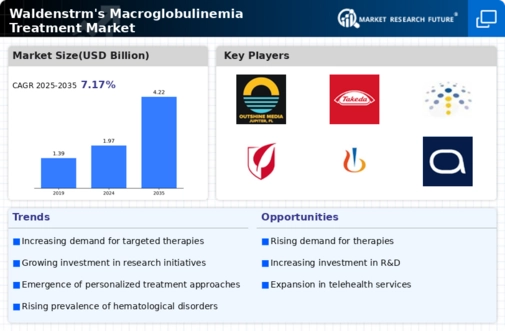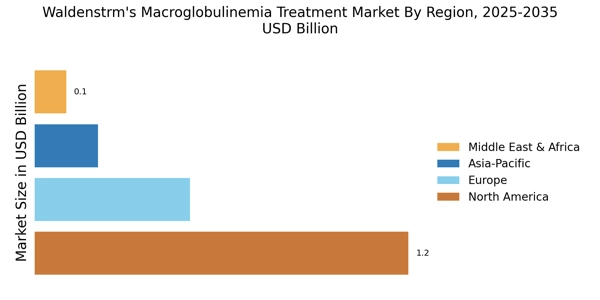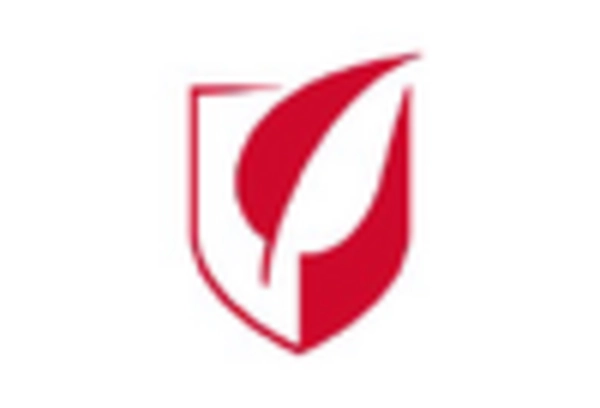Emergence of Targeted Therapies
The emergence of targeted therapies represents a transformative shift in the Waldenstrm's Macroglobulinemia Treatment Market. Recent developments in molecular biology have led to the identification of specific genetic mutations associated with the disease, paving the way for targeted treatment options. These therapies, which focus on the unique characteristics of Waldenstrm's Macroglobulinemia, have shown promising results in clinical trials, leading to improved efficacy and reduced side effects compared to traditional treatments. As more targeted therapies receive regulatory approval, the market is expected to expand significantly. This trend not only enhances treatment options for patients but also attracts investment from pharmaceutical companies eager to capitalize on the potential of precision medicine in treating this rare malignancy.
Advancements in Diagnostic Techniques
Advancements in diagnostic techniques are significantly influencing the Waldenstrm's Macroglobulinemia Treatment Market. Enhanced diagnostic tools, such as next-generation sequencing and advanced imaging technologies, facilitate earlier and more accurate detection of the disease. This early diagnosis is crucial, as it allows for timely intervention and personalized treatment strategies, which are becoming increasingly important in oncology. The ability to identify Waldenstrm's Macroglobulinemia at an earlier stage can lead to improved patient outcomes and increased survival rates. Consequently, the demand for effective treatment options is likely to rise, as healthcare providers seek to implement the latest diagnostic advancements in their practice. This trend not only supports the growth of the treatment market but also fosters a more informed patient population.
Increased Patient Awareness and Advocacy
Increased patient awareness and advocacy play a vital role in shaping the Waldenstrm's Macroglobulinemia Treatment Market. As more individuals become informed about Waldenstrm's Macroglobulinemia, there is a corresponding rise in demand for effective treatment options. Advocacy groups and patient organizations are actively working to educate the public and healthcare professionals about the disease, its symptoms, and available therapies. This heightened awareness not only encourages patients to seek timely medical intervention but also fosters a supportive community that can influence research priorities and funding. The growing presence of advocacy initiatives is likely to drive market growth by promoting the importance of innovative treatments and ensuring that the needs of patients are prioritized in the development of new therapies.
Growing Investment in Research and Development
Growing investment in research and development is a crucial driver for the Waldenstrm's Macroglobulinemia Treatment Market. Pharmaceutical companies and research institutions are increasingly allocating resources to explore novel treatment modalities and improve existing therapies. This trend is evidenced by the rising number of clinical trials focused on Waldenstrm's Macroglobulinemia, with many studies investigating new drug combinations and treatment protocols. The financial commitment to R&D not only accelerates the pace of innovation but also enhances the overall understanding of the disease, which is essential for developing effective treatment strategies. As the market continues to evolve, sustained investment in research will likely lead to breakthroughs that could significantly alter the treatment landscape for patients suffering from this condition.
Rising Incidence of Waldenstrm's Macroglobulinemia
The increasing incidence of Waldenstrm's Macroglobulinemia is a pivotal driver for the Waldenstrm's Macroglobulinemia Treatment Market. Recent data indicates that the prevalence of this rare blood cancer is on the rise, with estimates suggesting that approximately 3,000 new cases are diagnosed annually in certain regions. This growing patient population necessitates the development and availability of effective treatment options, thereby propelling market growth. As awareness of the disease improves, more patients are likely to seek medical attention, further contributing to the demand for innovative therapies. The rising incidence not only highlights the need for targeted treatments but also encourages pharmaceutical companies to invest in research and development, ultimately enhancing the treatment landscape for Waldenstrm's Macroglobulinemia.


















Leave a Comment